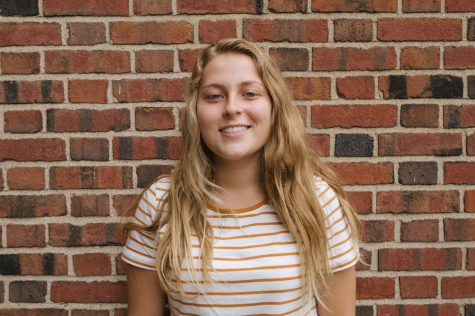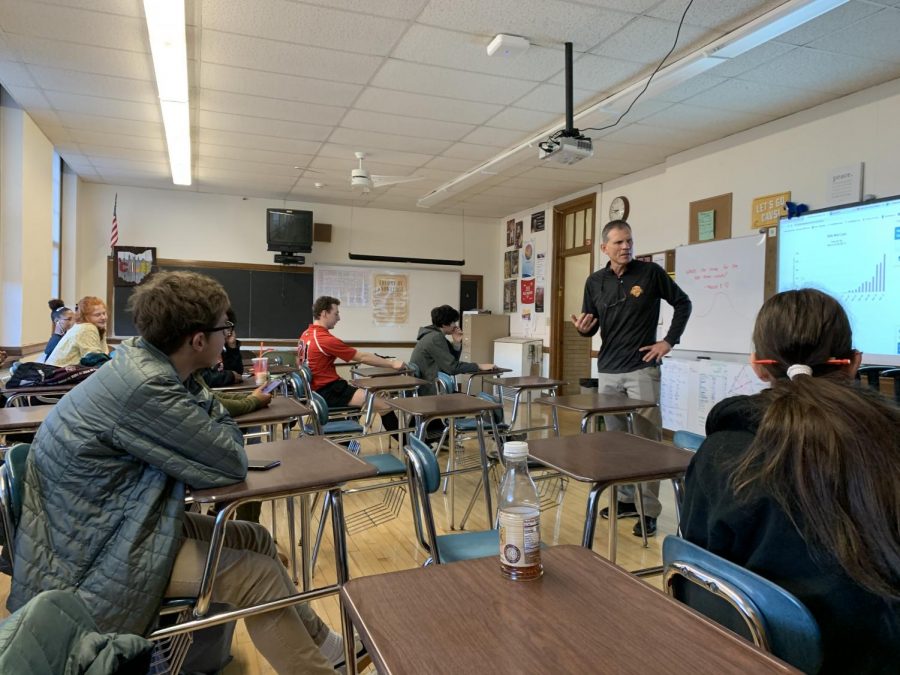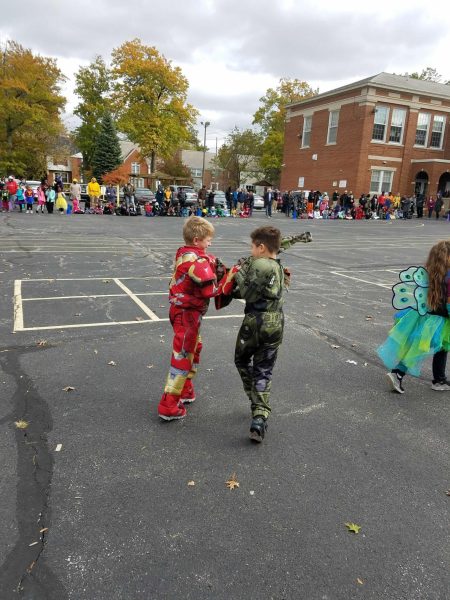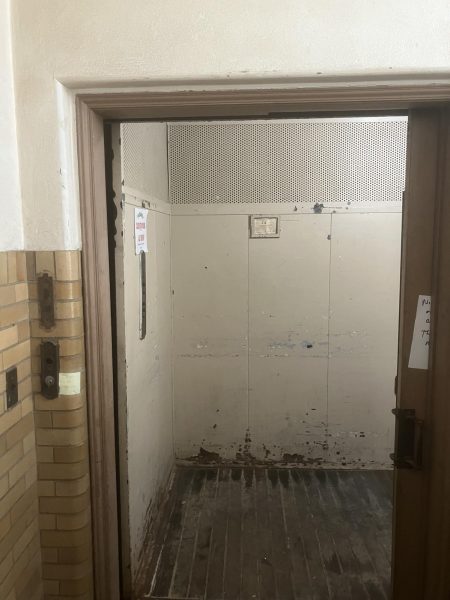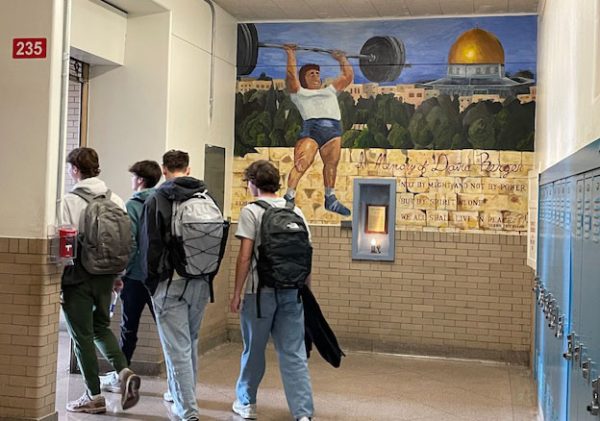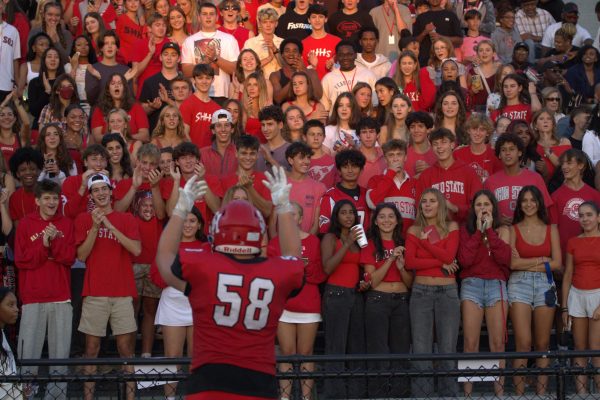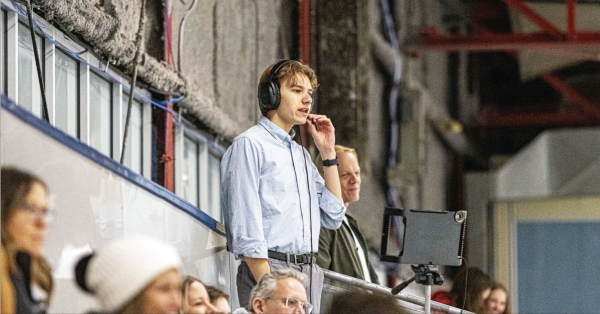District Announces Instructional Plan for School Closure
Three levels of remote instruction will guide students and teachers
Math teacher Ray Durban instructs his students in school for the last time before the state-mandated, three-week closure, ordered to slow the spread of the COVID-19 virus, begins.
In an email addressed to staff, families and students, Dr. David Glasner, superintendent, announced yesterday evening the district’s draft plan for what students and teachers will do while schools are closed for the next three weeks to slow the spread of COVID-19.
Executive Director of Communications and Public Relations Scott Stephens said this is a complicated situation, but the district is aiming to make it work. “We are able to get some sort of supplemental learning to support students to work from home,” he said.
The draft presents three levels of instruction for pre-K through fourth grade students and fifth grade through 12th grade students.
Level one states that no pre-K through 12th grade students have to report for attendance and there will be no instruction. The district will follow this plan beginning Monday, March 16.
By Wednesday, March 18, the district will be operating at level two.
At level two, students in grades five through 12 will have extended time to complete any third-quarter work that was assigned through today. The deadline to complete those assignments is April 3.
Senior Marina Denunzio said she is concerned about the plan to effectively extend the third quarter through April 3. “I would rather do class fully online and not have to worry about the fact that the quarter is extended,” she said. “I’d rather just continue on as much as we can online, so that way nothing gets postponed and nothing gets pushed back.”
According to an email sent to faculty from Principal Eric Juli at 8:40 a.m., the purpose of extending the third quarter is to allow teachers time to create instructional materials that would be necessary if schools remained closed after April 3.
In an email sent to students at 10:31 a.m., Juli stated that more information would be emailed Monday.
Spanish teacher Ellen Roberts said that although she wants to look at the situation with a positive attitude, she recognizes that there will be hurdles to overcome. “I think it’s difficult in a language class, because we rely on speaking and listening, but there’s ways we can do that through online transmission,” she said.
The level two plan states that grades five through 12 teachers must hold virtual office hours for students at least twice weekly. Teachers must give students feedback on their work and enter grades into GradeBook. Staff must also access email twice daily.
Staff must work remotely and must check in with each student or family once a week. Special Education staff will complete Evaluation Team Reports and hold 504 and Individualized Educational Plan discussions via virtual meetings.
For level three, teachers must also prepare lessons in case school remains closed after three weeks.
Level three is more rigorous and is similar to taking an online course. “If we were to miss significant amounts of time over [three weeks], we wanted to have a plan in place that we could have meaningful teaching and learning for our students, even if they’re unable to be in our buildings,” Stephens said.
Level three for grades five through 12 mandates students work at home. They would be required to log into classes, and attendance would be taken daily by the teacher. Pre-K through fourth grade students would be required to work daily at home, and their attendance would be taken twice a week. Pre-K through second grade students would be required to complete instructional packets, and their families would have to check in with teachers twice a week. Second to fourth grade students would be provided with devices, and they would have the option for an instructional packet. Families would also check in three times a week for second- through fourth-grade students.
This plan also covers what staff should do for special education students. “We have special needs students who have very distinctive needs, and it’s important for us — and our legal obligation as well — to meet their needs,” Stephens said.
At level three, intervention specialists and related service providers would schedule instruction, and services would be scheduled around students’ needs. Staff would participate in legally-required meetings virtually.
Woodbury special education teacher Nicole Litterst said her students are going to struggle with this change because it’s challenging for them to work on their own or even have their parents understand the teaching methods they use. “I’m overwhelmed. I’m trying to come up with a plan right now on how to help my students who have very different learning needs and trying to figure out how to best accommodate them while they’re at home. I’m anxious on how all of this is going to work,” she said.
Free and reduced lunches will be available for students in all grades. Stephens said the district is still determining how to distribute the meals.
Shaker Heights Teachers’ Association President and English teacher John Morris said he thinks it’s the best plan available right now. “It’s going to change my curriculum; I’m going to look for shorter pieces that, of course, I can deliver online, and then assess online, too,” he said.
Roberts said the closure is going to be a challenge for everyone. “We are in such unchartered waters right now,” she said. “We are dealing with something we’ve never had to deal with before.”
The Shakerite will continue to cover this story as it develops.
Comment using your Facebook, Yahoo, AOL or Hotmail account
